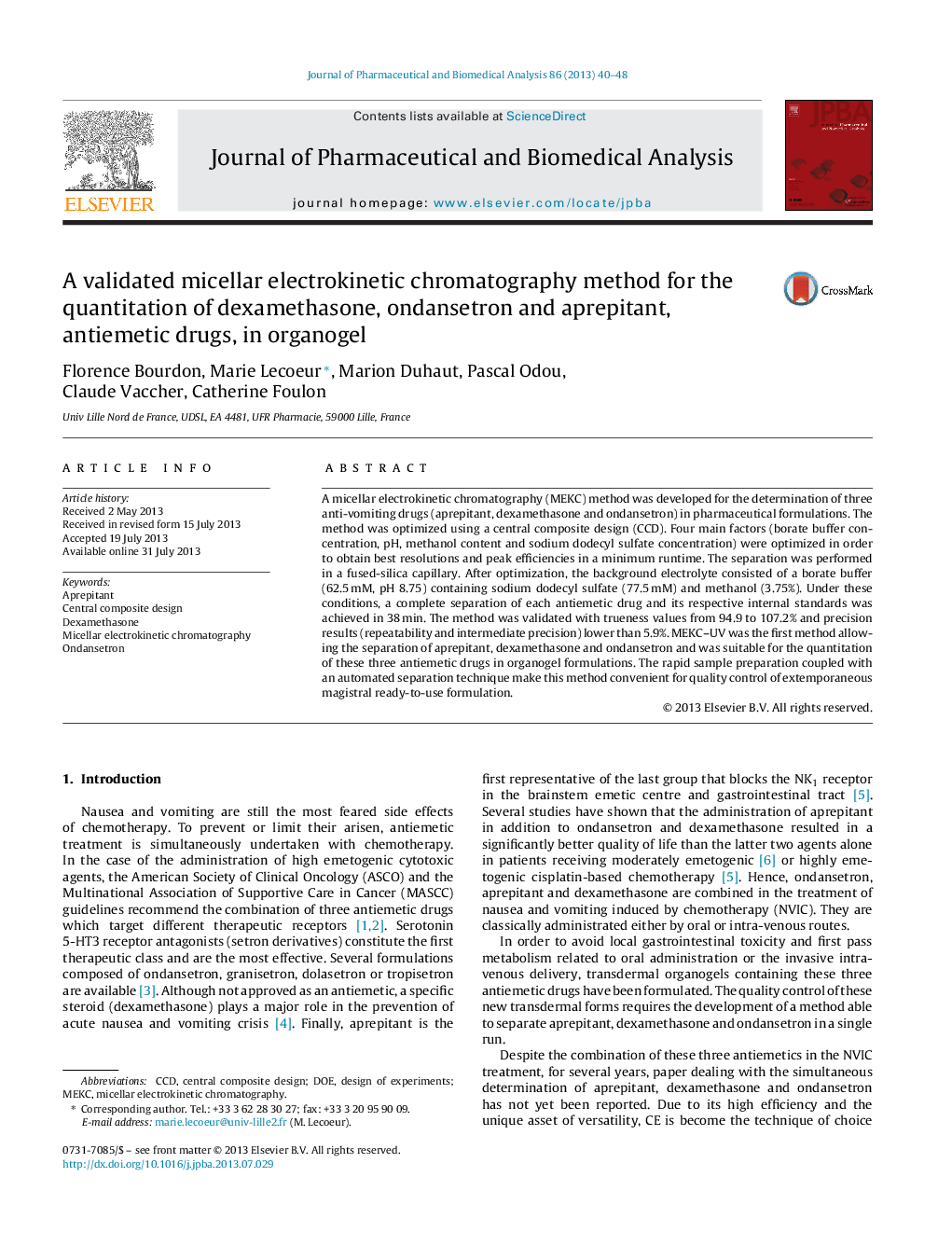| Article ID | Journal | Published Year | Pages | File Type |
|---|---|---|---|---|
| 1221886 | Journal of Pharmaceutical and Biomedical Analysis | 2013 | 9 Pages |
•A MEKC/UV method was developed for the simultaneous determination of ondansetron, dexamethasone and aprepitant.•Central composite statistical design was used to optimize the method.•The method was validated and applied to quality control of new organogel formulations based on these three antiemetic drugs.
A micellar electrokinetic chromatography (MEKC) method was developed for the determination of three anti-vomiting drugs (aprepitant, dexamethasone and ondansetron) in pharmaceutical formulations. The method was optimized using a central composite design (CCD). Four main factors (borate buffer concentration, pH, methanol content and sodium dodecyl sulfate concentration) were optimized in order to obtain best resolutions and peak efficiencies in a minimum runtime. The separation was performed in a fused-silica capillary. After optimization, the background electrolyte consisted of a borate buffer (62.5 mM, pH 8.75) containing sodium dodecyl sulfate (77.5 mM) and methanol (3.75%). Under these conditions, a complete separation of each antiemetic drug and its respective internal standards was achieved in 38 min. The method was validated with trueness values from 94.9 to 107.2% and precision results (repeatability and intermediate precision) lower than 5.9%. MEKC–UV was the first method allowing the separation of aprepitant, dexamethasone and ondansetron and was suitable for the quantitation of these three antiemetic drugs in organogel formulations. The rapid sample preparation coupled with an automated separation technique make this method convenient for quality control of extemporaneous magistral ready-to-use formulation.
Graphical abstractFigure optionsDownload full-size imageDownload as PowerPoint slide
